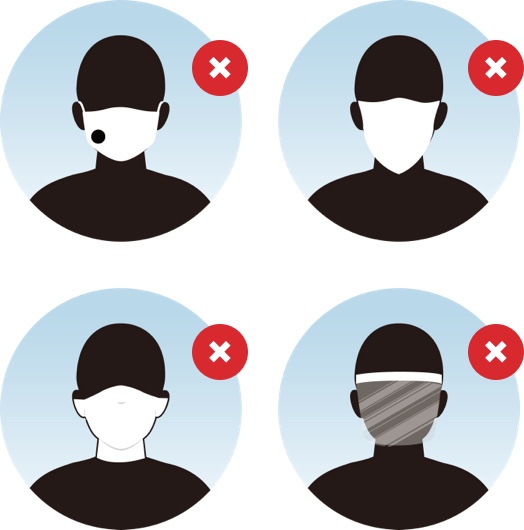
How to prepare for travel
1
View entry requirements
2
Enjoy a touchless travel experience
Download the Air Canada mobile app for touchless travel, from check-in to takeoff.
Learn more3
Day of travel
Tips on how to pack and prepare to get through airport security efficiently.
Understand your carry-on limitations:
- Each customer can carry-on one standard article and one personal item. Learn More.
Organize your bags:
- Electronics are easily accessible.
- Liquids, aerosols ands gels don’t exceed 100ml and fit into 1 clear, resealable plastic bag no more than 1L in capacity.
- Some items can’t be brought onboard an aircraft. Others can only go in your checked baggage. Batteries, pocket knives and oversized liquids, aerosols or gels have restrictions. Check CATSA’s “what can I bring” tool for more information.
- When you pack your checked bag, consider adding your name and contact information to the exterior of your luggage and into a secure pocket in the event that your bag tag is lost in transit.
Make your airport outfit easy and functional:
- Shoes that are difficult to remove, items that contain metal like large belt buckles or excessive layering could require secondary security screening or slow you down at the screening checkpoint.
We offer several simple ways to quickly check in to your upcoming flight, including the Air Canada app.
Review check-in and boarding times for your itinerary. Arriving less than 2 hours prior to departure for domestic travel and less than 3 hours prior to international/transborder travel could result in a delay to your travel plans.
There are a few things that you can do to make your airport experience more efficient.
- Keep your boarding pass easily accessible for scanning as you go through security touchpoints.
- Have your liquids, aerosols or gels stored in a clear plastic bag.
- Take your liquids bag and electronic devices out and ready to put into separate plastic bins.
- Remove any belts or items that could be flagged by the metal detector.
- Put your change, keys and cellphone in your carry-on and other personal items such as your coat in the plastic bins.
Health and safety
Learn about how we are helping keep you safe with Air Canada CleanCare+.
Learn more about recommended face coverings for travel
Passengers no longer need to wear masks on board flights within Canada. Although Transport Canada has lifted the mask requirement, all passengers and flight crew are recommended to wear high-quality and well-fitted masks throughout their journey.
High quality face coverings are made with protective layers of absorbent fabric that fit snugly over the nose, mouth, and chin, and are secured to the face with ties or ear loops. To learn more about how to choose a mask, visit the Public Health Agency of Canada (PHAC) website.
International destinations may still require face coverings. Find out your destination travel restrictions.
Learn more about how we’re keeping you safe
With the onset of COVID-19, we expanded our aircraft grooming procedures, which already incorporated the use of hospital disinfectant and specialized techniques. All cleaning products we use, including disinfectants, are fully approved for use by Health Canada.
As per PHAC guidelines and other resources, coronaviruses do not readily survive on soft materials (headrest covers, seat covers, carpets, etc.). However, these are replaced if soiled.
With all communicable disease protocols, Air Canada is notified by the appropriate health authority about potential public health issues after a flight. Depending on the transmission profile of the disease, we are given strict protocol towards contact tracing and other health guidance measures.
The health authorities take responsibility for contacting passengers directly and advising them of the situation. In most cases, crews primarily working in the specific rows are also included in the contact tracing. Due to privacy laws, the names cannot be disclosed to anyone other than the public health authority.
As part of our CleanCare+ program, we distribute complimentary Customer Care Kits, which include hand sanitizer packets, two antiseptic wipes, and facemasks (non-surgical) upon request to customers on board all Air Canada and Air Canada Express flights.
For sanitary reasons, the bag used to package these Care Kit items also doubles as a trash bag to dispose of any personal items.
Air Canada is 100% compliant with all Transport Canada and PHAC health and safety directives for crews and employees, including self-isolation.
Any employee who feels ill or experiences any COVID-19 symptoms must stay home and seek medical advice. Employees continue to perform wellness checks before every shift.
We also encourage all customer-facing employees to use Personal Protective Equipment such as face guards, masks and gloves, and all employees have access to hand sanitizer. Our in-flight crew is also additionally provided with safety glasses and gowns.
Find out why the transmission of communicable diseases inside an aircraft are very rare.
Cases of transmission of communicable diseases on aircraft are very rare. The reasons for the low rate of in-flight transmission are not fully determined but are thought to include a combination of factors, such as the inherent characteristics of cabin air flow.
Various government bodies have confirmed the risk of on-board transmission is exceedingly low, which accords with scientific studies on communicable diseases and air travel.



